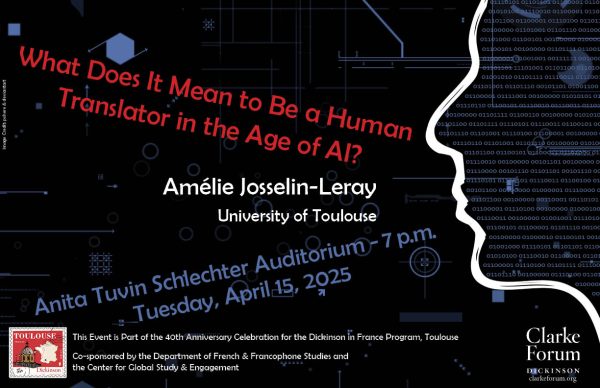Opinion: Halloween and Cultural Appropriation
I remember hearing about the controversies over cultural appropriation shortly after I joined Dickinson as a new professor. I went to graduate school in Canada, and up until that point, I had only come across this term in some academic corners. Since then (circa 2015), charges of cultural appropriation have spread far and wide, and our campus has had its own share of reckoning, especially with Halloween consumes. I waded into the troubled waters with puzzlement and intrigue. For one thing, public opinions run the gamut of expressing criticism and outrage, mounting defense, to singing praises. For another, this polarization cannot be explained by political ideologies alone. Yes, cultural appropriation concerns are strongly associated with the “progressive left” who champion social justice causes, but more seem at play.
So I did what I was trained to do — asking people what they think in part to help me make sense of this divisive issue. My collaborators and I conducted several studies with Dickinson students and the general population of Americans. One major finding is not all cases of cultural appropriation are created equal. Wearing insensitive Halloween costumes on college campuses raise different concerns from donning bindis or hijabs by people who do not affiliate with the religions, which in turn raise different concerns about profiting from selling artifacts from indigenous communities. While some people find almost all cases unacceptable, others are more discerning. Most seem to draw a line somewhere.
What explains how a person draws their line then? In addition to personal politics — whether you identify as a conservative or a liberal — what also matters is your view on how to manage diversity in society, known as diversity ideologies. We studied three diversity ideologies — colorblindness, multiculturalism, and polyculturalism — and found they afford different lenses to understand cultural appropriation. First, colorblindness finds group categories unnecessary and encourages people to overlook them. Through the colorblind lens, acts of appropriation conjure up the imagery of a marketplace — exchange of cultural commodities in a fair market. If cultural appropriation is no more than cultural exchange, it justifies a permissive stance.
Multiculturalism advances a counter-narrative to colorblindness: group differences ought to be recognized, if not celebrated. A common version of multiculturalism is respecting the wish of minority groups to maintain their cultures due to power imbalance. Multiculturalism calls to mind the imagery of cultural exploitation of historically marginalized groups by the dominant group: the misrepresentation, mistreatment and even loss of ownership of minority cultures as the majority group encroaches on their spaces. Cultural exploitation explains an asymmetry in the current discourse over cultural appropriation. White people are far more often condemned for appropriating from people of color than the other way around. This judgment asymmetry makes sense through the multicultural, but not colorblind lens.
Finally, polyculturalism encourages people to see cultures as interacting and changing over time through interactions. Polyculturalism distinguishes itself by pointing out that boundaries between groups are contestable, if not permeable. The polycultural imagery of cultural appropriation is that of transculturation: cultural appropriation is the inevitable yet messy microprocess by which cultures come to influence each other. Transculturation makes it hard to police what is a legitimate or illegitimate cultural borrowing. Think of a novelist writing about characters from cultures other than her own. Who’s to say which kind of authentic experiences she needs to be deemed qualified to create those characters? Through the polycultural lens, not all cases of cultural appropriation are wrong and some may even be valuable.
As we approach Halloween, I don’t pretend to hold moral authority as to what you should or should not do, but let me end with a factoid from my research. The majority of my respondents thought it wrong for a white person to wear culturally stereotypical Halloween costumes.



